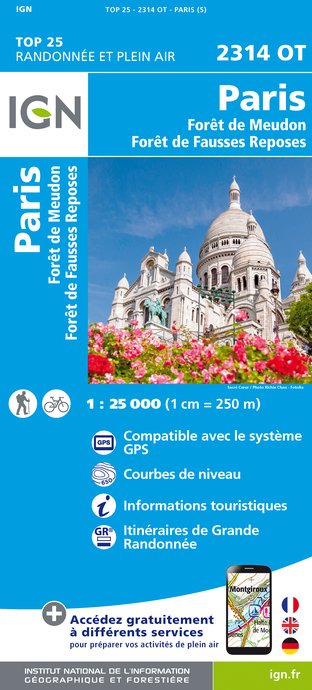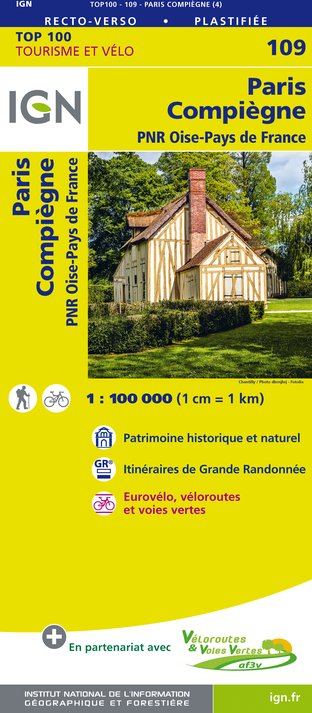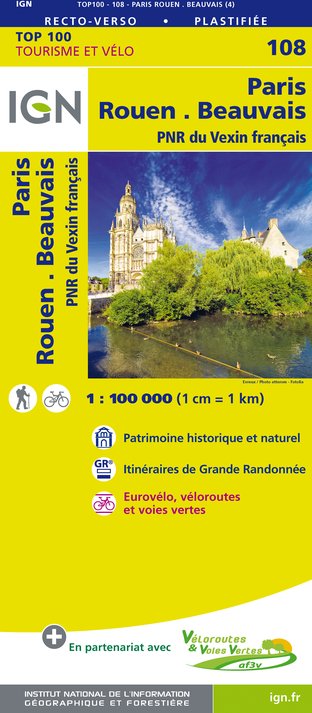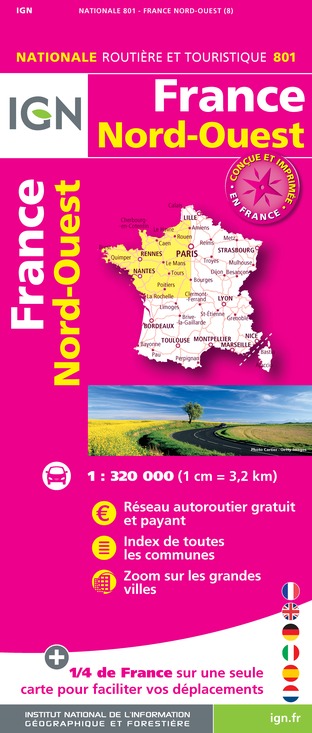Warnung
Warnungen
Art der Übung
Wandern
Präsentation
Karte
Schritte
Sehenswürdigkeiten
Cirkwi Kurzbeschreibung
Bewertungen und Rezensionen
In der Umgebung sehen
Die Wappen von Paris « Fluctuat nec mergitur »



Kredit : Bluebear2
Die Cirkwi Kurzbeschreibung
Entdecke Paris: Eine historische Reise durch seine Embleme
Als Reisemagazinschreiber freue ich mich, Ihnen eine einzigartige Reise vorstellen zu dürfen, die von Balades Fluviales Fabienne Lemoine Fondateur konzipiert wurde. Sie verspricht eine intime Erkundung des reichen Erbes von Paris durch seine ikonischen Embleme und Wappen. Diese Reise geht nicht nur darum, Spuren nachzuverfolgen, sondern die Essenz des unerschütterlichen Geistes von Paris zu entdecken, verankert in seinem berühmten Motto "Fluctuat nec mergitur". Während wir in malerische Landschaften und architektonische Wunder eintauchen, die die Zeit überstanden haben, werden wir eine Erzählung von Widerstandsfähigkeit, Prestige und unerschütterlicher Ehre entdecken, die das Motto der Stadt verkörpert. Begleiten Sie uns bei der Erfahrung eines anderen Teils von Paris, weit entfernt von den ausgetretenen Touristenpfaden.
Eine Reise der besonderen technischen Eigenschaften
Dies sorgfältig ausgearbeitete Reiseprogramm von Balades Fluviales Fabienne Lemoine Fondateur erstreckt sich über ungefähr 12,92 km und bewegt sich von einer Höhe von 63 Metern bis zu einer Tiefe von 27 Metern mit einer geringfügigen Höhenvariation, die eine relativ einfache Trekkingroute darstellt, die von den meisten Menschen bewältigt werden kann. Das sorgfältige Design gewährleistet einen nahtlosen Übergang von einem Wahrzeichen zum anderen, ohne unnötige Anstrengungen. Die erwarteten positiven Höhenänderungen variieren zwischen 109 und 107 Metern und zeigen einen sanften Anstieg, der für Teilnehmer jeden Alters geeignet ist und somit eine technisch angepasste Reise durch das historische Herz von Paris ermöglicht.
Saisonale Empfehlungen für Paris-Entdecker
Jede Jahreszeit in Paris bietet eine einzigartige Kulisse für diese emblematische Reise. Im Frühling erblüht die Stadt und bietet eine malerische Umgebung, ideal zum Erkunden. Im Sommer sind die Tage länger, aber auch die Menschenmassen größer; frühe Morgen- oder späte Abendtouren sind ratsam. Im Herbst wird die Stadt in warmen Farben gemalt, perfekt für gemütliche Spaziergänge. Der Winter ist zwar kälter, bietet aber oft klarere Tage. Unabhängig von der Jahreszeit sind bequeme Wanderschuhe ein Muss, und man sollte immer auf die unberechenbaren Regenschauer der Stadt mit einem Regenschirm oder Regenmantel vorbereitet sein, um eine angenehme und ungestörte Erkundung sicherzustellen.
Das Herz der französischen Geschichte und Kultur
Paris ist nicht nur die Hauptstadt Frankreichs, sondern auch der Kern der historischen und kulturellen Entwicklung des Landes, eng verbunden mit der Identität der Nation. Die Stadt, die historisch ein Zentrum für Gelehrte, Künstler und Revolutionäre war, hat ein Erbe, das Jahrhunderte umspannt. Die Wappen und Embleme, denen Sie begegnen, verkörpern Geschichten von Widerstandsfähigkeit, Revolution und Wiedergeburt, die nicht nur die Stadt, sondern auch die Nation geprägt haben. Während wir diese Route durchqueren, sind wir nicht nur Zeugen architektonischer Wunder, sondern tauchen in eine lebendige, atmende Erzählung menschlicher Genialität und des Geistes ein, die weiterhin die Welt beeinflusst.
Wetterinformationen für den Abenteurer in Paris
Das Klima in Paris ist überwiegend ozeanisch, gekennzeichnet durch milde Winter und angenehm warme Sommer, was es zu einem ganzjährigen Reiseziel macht. Die beste Zeit für diese emblematische Reise wäre jedoch im Frühling (März bis Mai) oder im Herbst (September bis November). In diesen Perioden sind die Temperaturen in der Regel mild und es gibt weniger Touristen, was eine entspanntere Erfahrung des reichen Geschichts- und Kulturangebots der Stadt bietet. Überprüfen Sie immer den Wetterbericht vor Ihrer Reise, da Paris bekannt für seine unerwarteten Regenschauer ist, unabhängig von der Jahreszeit.
Als Reisemagazinschreiber freue ich mich, Ihnen eine einzigartige Reise vorstellen zu dürfen, die von Balades Fluviales Fabienne Lemoine Fondateur konzipiert wurde. Sie verspricht eine intime Erkundung des reichen Erbes von Paris durch seine ikonischen Embleme und Wappen. Diese Reise geht nicht nur darum, Spuren nachzuverfolgen, sondern die Essenz des unerschütterlichen Geistes von Paris zu entdecken, verankert in seinem berühmten Motto "Fluctuat nec mergitur". Während wir in malerische Landschaften und architektonische Wunder eintauchen, die die Zeit überstanden haben, werden wir eine Erzählung von Widerstandsfähigkeit, Prestige und unerschütterlicher Ehre entdecken, die das Motto der Stadt verkörpert. Begleiten Sie uns bei der Erfahrung eines anderen Teils von Paris, weit entfernt von den ausgetretenen Touristenpfaden.
Eine Reise der besonderen technischen Eigenschaften
Dies sorgfältig ausgearbeitete Reiseprogramm von Balades Fluviales Fabienne Lemoine Fondateur erstreckt sich über ungefähr 12,92 km und bewegt sich von einer Höhe von 63 Metern bis zu einer Tiefe von 27 Metern mit einer geringfügigen Höhenvariation, die eine relativ einfache Trekkingroute darstellt, die von den meisten Menschen bewältigt werden kann. Das sorgfältige Design gewährleistet einen nahtlosen Übergang von einem Wahrzeichen zum anderen, ohne unnötige Anstrengungen. Die erwarteten positiven Höhenänderungen variieren zwischen 109 und 107 Metern und zeigen einen sanften Anstieg, der für Teilnehmer jeden Alters geeignet ist und somit eine technisch angepasste Reise durch das historische Herz von Paris ermöglicht.
Saisonale Empfehlungen für Paris-Entdecker
Jede Jahreszeit in Paris bietet eine einzigartige Kulisse für diese emblematische Reise. Im Frühling erblüht die Stadt und bietet eine malerische Umgebung, ideal zum Erkunden. Im Sommer sind die Tage länger, aber auch die Menschenmassen größer; frühe Morgen- oder späte Abendtouren sind ratsam. Im Herbst wird die Stadt in warmen Farben gemalt, perfekt für gemütliche Spaziergänge. Der Winter ist zwar kälter, bietet aber oft klarere Tage. Unabhängig von der Jahreszeit sind bequeme Wanderschuhe ein Muss, und man sollte immer auf die unberechenbaren Regenschauer der Stadt mit einem Regenschirm oder Regenmantel vorbereitet sein, um eine angenehme und ungestörte Erkundung sicherzustellen.
Das Herz der französischen Geschichte und Kultur
Paris ist nicht nur die Hauptstadt Frankreichs, sondern auch der Kern der historischen und kulturellen Entwicklung des Landes, eng verbunden mit der Identität der Nation. Die Stadt, die historisch ein Zentrum für Gelehrte, Künstler und Revolutionäre war, hat ein Erbe, das Jahrhunderte umspannt. Die Wappen und Embleme, denen Sie begegnen, verkörpern Geschichten von Widerstandsfähigkeit, Revolution und Wiedergeburt, die nicht nur die Stadt, sondern auch die Nation geprägt haben. Während wir diese Route durchqueren, sind wir nicht nur Zeugen architektonischer Wunder, sondern tauchen in eine lebendige, atmende Erzählung menschlicher Genialität und des Geistes ein, die weiterhin die Welt beeinflusst.
Wetterinformationen für den Abenteurer in Paris
Das Klima in Paris ist überwiegend ozeanisch, gekennzeichnet durch milde Winter und angenehm warme Sommer, was es zu einem ganzjährigen Reiseziel macht. Die beste Zeit für diese emblematische Reise wäre jedoch im Frühling (März bis Mai) oder im Herbst (September bis November). In diesen Perioden sind die Temperaturen in der Regel mild und es gibt weniger Touristen, was eine entspanntere Erfahrung des reichen Geschichts- und Kulturangebots der Stadt bietet. Überprüfen Sie immer den Wetterbericht vor Ihrer Reise, da Paris bekannt für seine unerwarteten Regenschauer ist, unabhängig von der Jahreszeit.
Automatisch generiert.
IGN Karten

2314OT - PARIS FORÊT DE MEUDON FORÊT DE FAUSSES REPOSES
Herausgeber : IGN
Sammlung : TOP 25 ET SÉRIE BLEUE
Leiter : 1:25 000
13.90€

119 PARIS SENS PNR DU GÂTINAIS FRANÇAIS
Herausgeber : IGN
Sammlung : TOP 100
Leiter : 1:100 000
8.40€

190 PARIS CHANTILLY FONTAINEBLEAU
Herausgeber : IGN
Sammlung : TOP 100
Leiter : 1:100 000
8.40€

118 PARIS CHARTRES PNR DE LA HAUTE VALLÉE DE CHEVREUSE
Herausgeber : IGN
Sammlung : TOP 100
Leiter : 1:100 000
8.40€

109 PARIS COMPIÈGNE PNR OISE-PAYS DE FRANCE
Herausgeber : IGN
Sammlung : TOP 100
Leiter : 1:100 000
8.40€

108 PARIS ROUEN BEAUVAIS PNR DU VEXIN FRANÇAIS
Herausgeber : IGN
Sammlung : TOP 100
Leiter : 1:100 000
8.40€

D75-95 ÎLE-DE-FRANCE OUEST
Herausgeber : IGN
Sammlung : CARTES DÉPARTEMENTALES IGN
Leiter : 1:150 000
5.90€

D77 SEINE-ET-MARNE
Herausgeber : IGN
Sammlung : CARTES DÉPARTEMENTALES IGN
Leiter : 1:150 000
5.90€

NR08 CENTRE-VAL DE LOIRE
Herausgeber : IGN
Sammlung : CARTES RÉGIONALES IGN
Leiter : 1:250 000
6.80€

NR03 ÍLE DE FRANCE
Herausgeber : IGN
Sammlung : CARTES RÉGIONALES IGN
Leiter : 1:250 000
6.80€

NR01 HAUTS-DE-FRANCE
Herausgeber : IGN
Sammlung : CARTES RÉGIONALES IGN
Leiter : 1:250 000
6.80€

801 FRANCE NORD OUEST
Herausgeber : IGN
Sammlung : CARTES NATIONALES IGN
Leiter : 1:320 000
6.10€

EUROPE
Herausgeber : IGN
Sammlung : DÉCOUVERTE DES PAYS DU MONDE IGN
Leiter : 1:2 500 000
7.00€
Technische Informationen
Wandern
Schwierigkeit
Nicht angegeben
Entfernung
13 km
Art der Übung
Wandern
Mehr anzeigen
Höhenprofil
Ausgangspunkt
75004
Paris
Lat : 48.856414Lng : 2.3517394
Schritte
Sehenswürdigkeiten
Datenautor
Bewertungen und Rezensionen
In der Umgebung sehen










